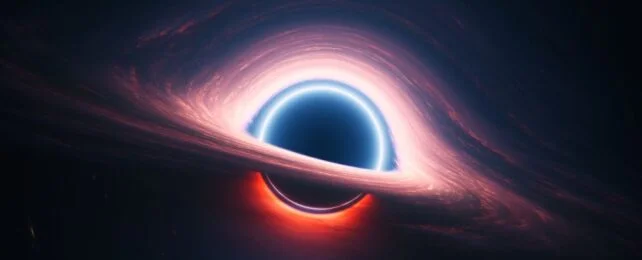
Scientists Create “Black Hole Bomb” in the Lab: A Breakthrough in Understanding Black Holes
For decades, the 'black hole bomb' was a theoretical concept relegated to the realm of astrophysics. Now, scientists have successfully created an analog of this bizarre phenomenon in the laboratory, opening up new avenues for understanding the enigmatic properties of black holes and the physics governing them. This groundbreaking experiment, recreating a concept proposed over 50 years ago, could lead to innovative technologies like new electromagnetic signal amplifiers and advanced energy storage systems.
The experiment, led by researchers from the universities of Southampton and Glasgow, validates the concept that the rotation of an object can amplify electromagnetic waves, essentially mimicking the behavior of a black hole. This is based on the work of physicist Yakov Zel'dovich, who in 1971 predicted that a rotating metallic cylinder could amplify electromagnetic waves if spun fast enough—an idea inspired by rotating black holes.

The core of the experiment involved an aluminum cylinder spinning at high speeds, surrounded by coils generating a rotating magnetic field. Crucially, when the cylinder's rotational speed exceeded that of the magnetic field, instead of absorbing energy, the system amplified it, demonstrating **superradiance**.
As Maria Chiara Braidotti, a physics research associate at the University of Glasgow, explained, their work brings the prediction of spontaneous wave generation fully into the lab. The experiment even encountered moments when, as Marion Cromb, a researcher at the University of Southampton, noted, circuit components exploded due to the intensity of the energy amplification—a thrilling challenge for the team.
The ramifications of this experiment extend beyond mere theoretical validation. By harnessing the Zel'dovich effect, this research provides a tangible model for understanding concepts at the intersection of astrophysics, thermodynamics, and quantum theory. The experiment shows, as the researchers write in their paper, are a direct realization of the rotating absorber amplifier first proposed by Zel'dovich.

While not a true black hole, this analog demonstrates the fundamental principle that rotational superradiance and exponential amplification are applicable not only to cosmic monsters but also within controlled laboratory settings. This paves the way for further investigations into exotic effects like the generation of waves from quantum vacuum energy, a concept that even Zel'dovich predicted.
Could this laboratory 'black hole bomb' be the key to unlocking new forms of energy and signal amplification? What other mysteries of the universe can we unravel with such innovative experimental setups? Share your thoughts and predictions in the comments below.